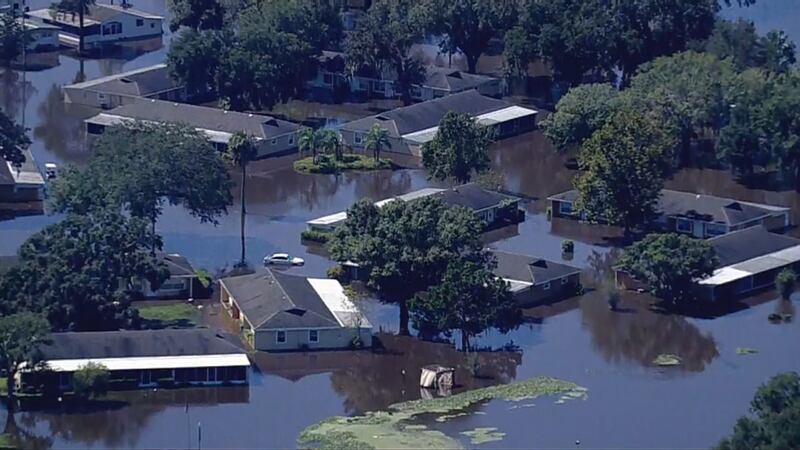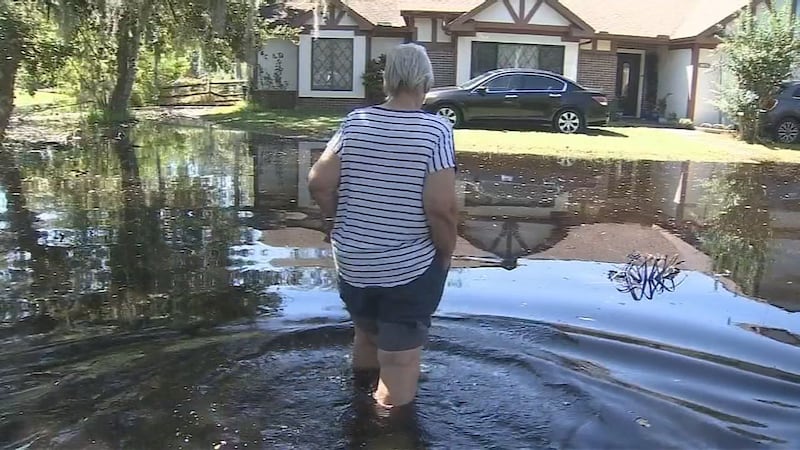ORLANDO, Fla. — Hurricane Ian will forever be remembered by Floridians for a number of different things: the immense destruction wrought on Fort Myers Beach, the historic flooding that tore through Central Florida., communities left to clean up and rebuild.
>>> STREAM CHANNEL 9 EYEWITNESS NEWS LIVE <<<
As the waters start receding from the state’s lowest-lying points, homeowners, nonprofit organizers and government leaders are beginning to tabulate a list of lessons the storm taught the region – ones that will hopefully never be learned the hard way again.
“We were not prepared,” local Salvation Army leader Captain Ken Chapman declared. “It does teach us that we’ve got to get better prepared for the future.”
The list started before Ian ever made landfall, with an all-too-familiar focus on the center of the storm’s forecast cone. Despite warnings from meteorologists that the entire cone was in play, which included Lee County, preparations mainly centered around the Tampa region.
READ: ‘It’s my home and I love it here’: Mims residents still reeling from Hurricane Ian flooding
People in Lee County now say they wish they had been told to evacuate sooner.
“When that evacuation order came, we’re like 24 hours (out),” one Fort Myers area resident said. “That’s not a lot.”
Indeed, the storm’s eventual southern track helped to bring massive amounts of rain to Central Florida, contributing to the flooding. In the Geneva area, property owners watched as stakes were placed along low-lying roadways that frequently flood.
READ: Eligible Central Florida residents displaced by Hurricane Ian still waiting for hotel vouchers
However, the residents said they wished the government informed them about potential worst-case scenarios as it issued an evacuation order for the region, and responded sooner with additional sandbags.
“I think that somebody somewhere knew what was coming, but chose not to do much about it as comparison to … Osceola County,” Mike Smith said as he helped his family leave their home by boat.
For his part, Smith said he would’ve moved more of his items to higher ground and sought shelter elsewhere, had he known water would flow through his home.
READ: Central Florida election officials work to ensure Hurricane Ian doesn’t impact voting
Chapman offered multiple lessons he said would be used in future storms, primarily having a larger supply of food stockpiled and more trained volunteers ready to hit the ground running once the winds died down.
“The people who really fund the mission and make it happen, that they are on alert when we snap the fingers,” he said, gesturing.
Moving forward, some of the most consequential lessons learned may come at the county level. After Orlo Vista flooded for a second time in five years, Mayor Jerry Demings said he had doubts the county’s $20 million infrastructure plan to protect it would be good enough.
READ: Tropical Storm Julia forms in the Caribbean
When asked what his calls for a “permanent solution” would be, Demings, who was careful to say no idea would fully protect anywhere in the county from flooding in the future, said a buyout option was being discussed.
That option, he said, would allow the county to expand the retention ponds in the area using neighboring properties. Though any idea would be in its early stages, the property owners living closest to the existing ponds expressed an interest in the concept.
“This is our first-time home, so we do have an attachment to it,” Aalyh Bach said. “Realistically, if it’s going to flood every three years and we lose everything, it’s not really worth that kind of heartbreak.”
READ: Lake Toho water levels start to come down
Click here to download the free WFTV news and weather apps, click here to download the WFTV Now app for your smart TV and click here to stream Channel 9 Eyewitness News live.
©2022 Cox Media Group









